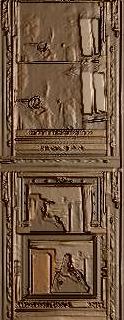Striker.
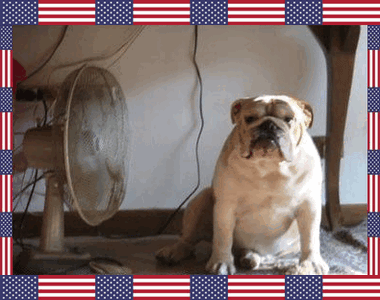
Son And Grandson Of Striker.
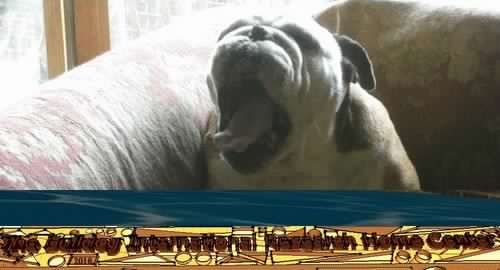
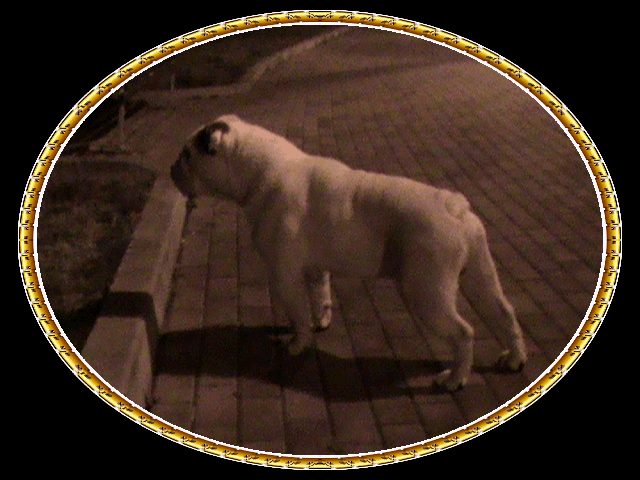
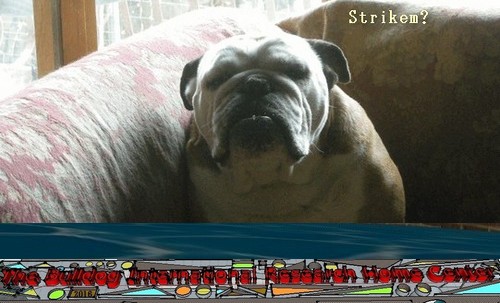


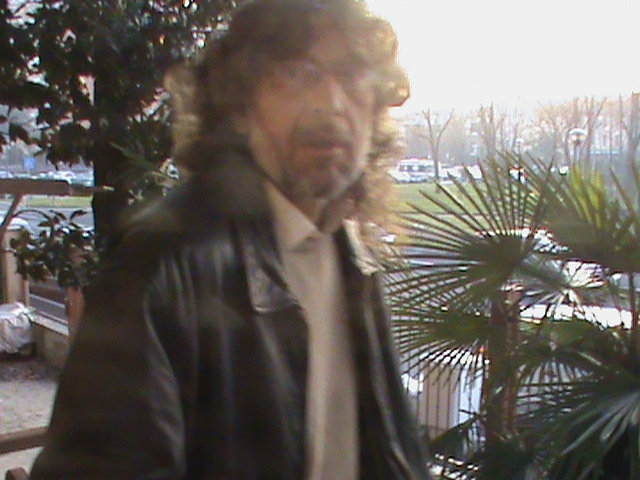 CONTACT: originalbulldogclub@gmail.com
CONTACT: originalbulldogclub@gmail.com


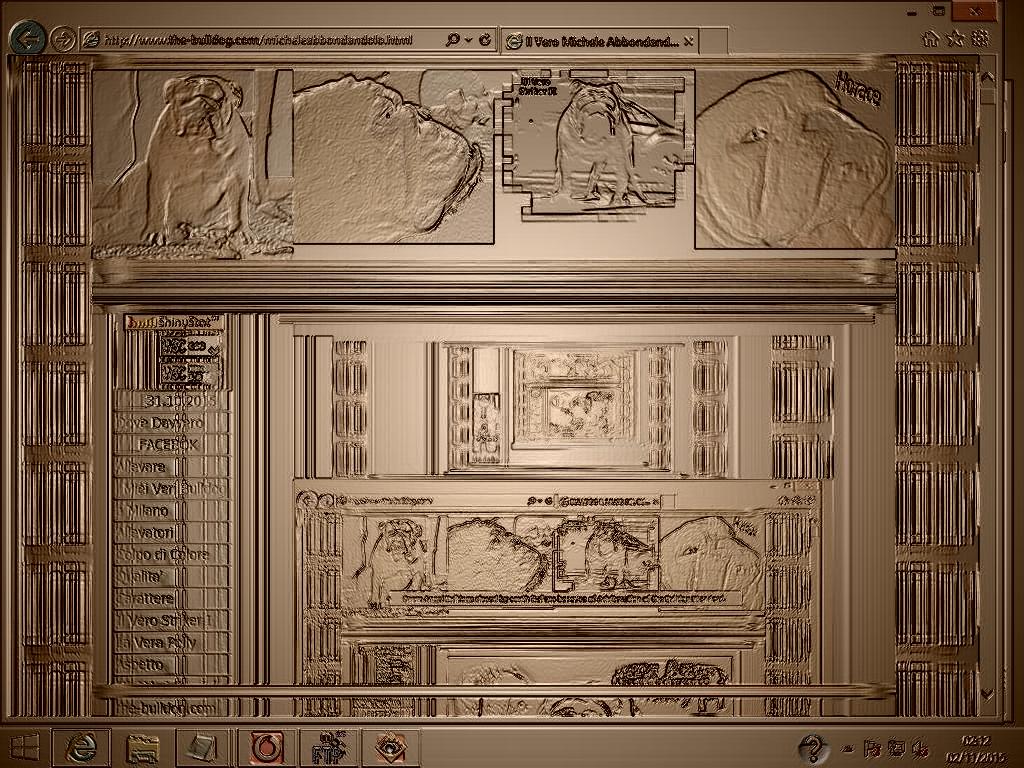
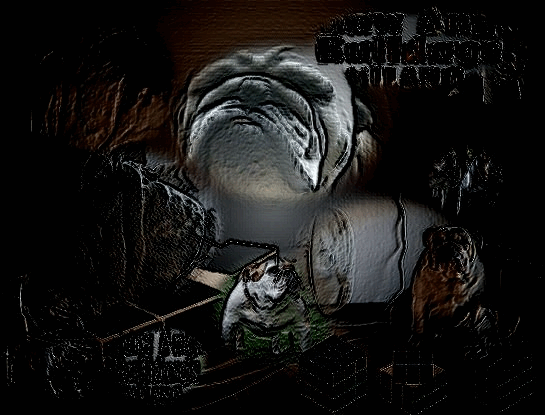


Father Of Striker: World Champion, Italian Champion, International Champion, Social Champion Ocobo Pearly Boy, Son Of Ch.Ocobo Tully. Mother: Tuffnuts Snow Angel, Daughter Of Ch. Tuffnuts Striker, Son Of Living Legend
Frenchies & Bullies Grooming, Grooming French Bulldogs & English Bulldogs - 1904
When the general health of a dog is impaired the fact is registered in his skin and hair, they losing in corresponding degree their natural softness and elasticity and smoothness and lustre. And as the complexion is cleared and brightened by exercise, so are the dog's skin and jacket improved by the same means. But while hygienic and dietetic influences act upon both man and the dog in precisely the same way, outwardly the salutary effect is much less quickly apparent in the latter, and he may have been ill and long since recovered and yet his coat be still quite dry and staring. And it may be all this even in the presence of continuous good health if cleanliness has not been maintained by grooming.
But even if a dog is well and has been faithfully cared for in this direction there is always work to be done on his coat before he can be shown at his best; and as the details of this are not generally well understood, a discussion of them can scarcely be without profit to the average reader.
The amount and character of the work to be put in on the coat of course depend upon the breed and the existing conditions. For instance, the standard for beagle hounds calls for a coarse, not a fine, coat; and obviously were one of these dogs treated to the methods required by setters a defect would be intensified if not actually created. Again, the coats of some kinds of terriers must be hard and wiry, and efforts to make them soft and pliant would simply detract from the merits of these dogs. On the -other hand, the coat of the Maltese must be as soft and silky as possible; that of the Yorkshire bright and flossy; while the toy spaniels must have coats that are soft and fine. Manifestly were a German poodle, whose coat is corded, treated to the same method of brushing and combing that these toys demand his identity could scarcely be retained.
Going a little farther in this direction it is noted that when the Clumber spaniel's coat is in good condition it is straight and silky, while the coat of the Irish water spaniel is in short, crisp curls. The greyhound's coat must be smooth and glossy; and very evidently one would have a hard time of it were he to try to bring the rough, shaggy coat of the deerhound to this condition.
But it is unnecessary to go farther in this direction, for the tyro has simply to determine what the standard for dogs of the same breed as his calls for and then adjust his work of conditioning the coat accordingly.
If a dog is kept right - that is, properly fed, given ample exercise and groomed regularly - his coat ought to be in fair condition always, and the work of bringing it to its best should be comparatively easy and not require more than three or four weeks, perhaps. If, however, it should be fine, smooth and glossy yet is coarse, dry and staring, then several months might be required to get it back. But whatever its condition the essential treatment should be begun as early as possible, - and preferably always with the training - for unless under the standard the coat of the dog should be coarse instead of fine there is always room for improvement no matter how high its polish.
The duty of removing all fleas and other vermin and thoroughly cleaning the skin and hair should first engage the owner; and assuming that his dog is other than a delicate toy, it will be advisable to employ some of the powerful insect destroyers - see chapter "Troublesome Insects" - and afterward wash faithfully, using soap as freely as required.
This done, if the skin is very dry, rough and inelastic and the hair staring, harsh and brittle, and the date of the show is near, it will be a good plan to use cod-liver oil externally for a few days. Having been drenched with this, the dog should be swathed with cotton cloth, if he will allow it to remain on, or covered with a thin blanket, and put into clean quarters supplied with an abundance of clean straw for bedding. And during the next four or five days this oil should be applied about once daily - being used always in generous quantity - and finally washed off.
If now the skin is still dry another such drenching should follow and be kept up nearly as long as before. And a dog must be in a rank condition if this treatment will not cause a very decided gain. The oil, by the way, not only softens the skin and hair and improves nutrition at the surface, but to some extent it is absorbed and has much the same effect as when given internally.
After the washing it would be well for the subject of this treatment to wear a blanket for a week or more. One would not of course ordinarily blanket a long-coated dog, but it would be advisable when the coat is badly off and very rough and staring, for it would keep the hair down, and a moderate degree of heat being conducive to fine hair, the extra warmth would have a tendency to make the coat fine and glossy. On the other hand, were a collie, for instance, soft in coat it would not do to blanket him, but on the contrary it would be well to make him give up his kennel quarters for a time and rough it.
Now comes the grooming, which must be done faithfully at least once, or better twice, every day; and the longer the time the owner devotes to it the greater his dog's chances of winning.
The hair once straightened out, - exceeding care and gentleness being used in the operation - unless the coat is naturally rough, shaggy or curly the comb should be laid aside, to be resorted to only when absolutely required. And it is not safe to use it often on a long-coated dog like a collie, because the teeth are liable to get down to the undercoat; and many a dog of this breed has had his coat ruined for the show season by carelessness or ignorance on the part of the kennel-man. Nor is the use of the comb often necessary with the common varieties of dogs, other than those with coats like the deerhound, where a good brushing is given every day.
The brush - of bristles from an inch and one-quarter to an inch and one-half in length for long-coated dogs, or a dandy brush for the smooth-coated - should be used for at least half an hour every morning. This should be followed by hair gloves, and these be kept busy for about the same length of time. Then should come the rubbing with the bare hands, - the one means of all for putting on a high polish - and this also should be persisted in for half an hour, and even an hour if possible.
All this must be done at least once a day in order to put the coat of a fine-haired dog in prime condition; and if he is to enter good company his owner would do well to have all these operations repeated again toward evening. And were they kept up day after day for several weeks, and proper diet and sufficient exercise given in the mean time, did the decision rest solely on condition of coat, the dog to which this treatment had been faithfully administered would be a sure winner over all others that had been denied it.
Doubtless some who contemplate showing will say that it would be utterly impossible for them to observe these directions and devote so much time to their dogs. But the writer cannot follow them, for there is no compromise treatment. They can be assured that under righteous judges a dog of average merit with a coat in poor condition will always be beaten by a poorer dog whose coat is in grand condition. Also, that in order that a dog whose coat according to the standard should be glossy may appear at his best, with all his chances of winning, he must be brushed and rubbed with the gloves and bare hands; and if his hair is fine and enough of this is done, when he enters the ring it should have the gloss of satin or highly polished ivory.
The hand rubbing - of which there cannot be too much during the last three weeks - should be kept up until the last washing before the show; and after that clean chamois leather or a towel should be used, for one cannot keep his hands perfectly clean at a show, and soiled hands would be sure to soil the coat.
With all dogs whose muscles should stand out like those of an athlete, or in other words all which ought to have "bossy" muscle, - as bull-dogs, bull terriers and greyhounds, - in rubbing with the hands the thighs should be rubbed both ways, and at the same time the muscles should be firmly grasped, kneaded and rolled for the purpose of stimulating, enlarging and hardening them. This rubbing up and down and massage ruffles the hair, and of course the same must be brushed and hand rubbed its way until the coat is right.
There must not be any mistake in this matter. The thighs of dogs only like those stated should be rubbed both ways, while all others should be brushed and rubbed always the one way - with, not against, the hair.
Special precautions against fleas should be taken in the kennels of dogs that are being put right for shows, for these dogs must not be washed any oftener than absolutely necessary for cleanliness. And it is well to add that excepting when they get badly soiled in their runs it will scarcely be required more than two or three times during the entire period of training or conditioning if they are faithfully groomed every day. Nor will it be advisable after the first thorough work of extermination to use any of the powerful flea destroyers in the form of liquids or soaps which contain much carbolic acid, alcohol or strong alkalies, for these might prove prejudicial to the skin and hair.
In fact it will be well to rely if possible on insect powder, and this ought to prove effective with good grooming, which alone renders fleas very uncomfortable and leads them to seek other victims that are less well cared for.
But the dog's quarters and bedding should be scrupulously clean always, and the former frequently treated to the most powerful destroyers, the liquids being chosen if the weather is such that speedy drying will follow their use, while insect powder must be depended upon under other conditions; and this should be blown into all cracks and crannies every two or three days.
Clean, coarse straw will be the best for bedding, and before it is put in it will be well to sprinkle freely over it the liquid extract of flea powder or infusion of quassia; after which it should be thoroughly dried.
As for washing, that must be done very carefully, and if soaps are used they should be above suspicion, it being accepted that the purest and best are none too good in this instance. But soaps should seldom be used with dogs that have very thin skins, as the Italian greyhound, and others whose jackets are becoming highly polished under the grooming and rubbing. Nor will they often be required on any dog that is groomed as faithfully and frequently as he ought to be, the fact being fixed that the more of this treatment he gets the less washing he needs.
With dogs that have thin skins, if their hair is short and they are naturally cleanly in their habits, rubbing with a damp cloth or sponge and afterward with a dry flannel will ordinarily suffice.
Some breeders of dogs whose jackets are silken and brilliant use raw eggs, instead of soap, in washing. They would answer the purpose with an Italian greyhound, a toy black-and-tan or a Maltese, but for obvious reasons they would not be adapted to general use, and excepting in extremely rare cases could not rightly be held superior to a soap of good quality. However, for those who care to use them here are the directions: -
Break as many eggs as required - according to the size of the dog - in a hand basin, and beat sufficiently to mix whites and yolks. Then add warm water in relative proportion of one pint to four eggs. Work this through the coat to the skin; and after the dog is well lathered have some one pour tepid water over him while you continue to shampoo until every trace of the eggs has been washed out, keeping in mind the fact that the rinsing must be thorough, otherwise the hair will be left in a very sticky state.

Frenchies & Bullies Grooming, Grooming French Bulldogs & English Bulldogs
Notwithstanding the injunction to use only the best soaps on dogs, and the natural desire of all to comply with it, many are likely to stumble at this point since so large a proportion of the brands reputed to be of the highest qualities are of cheap ingredients and therefore practically worthless as well as injurious to the skin and coat. Consequently the reader should be provided with a formula for preparing his own soap for kennel use.
Mr. Charles H. Mason, a breeder and exhibitor of long experience, and now known to the kennel world as America's foremost judge, informs the writer that the best kennel soap of which he knows is made as follows: -
I pound of "Crown soap,"
I ounce of "mild" mercurial ointment,
I ounce of powdered camphor.
These ingredients must be thoroughly mixed.
Mr. Mason used this soap for at least ten years, and with the best results, as proved by the many reports of the English papers praising the condition of his dogs.
"Crown soap," as it is called in this country, is a soft soap which is extensively used for various purposes in England, often by ladies in washing their hair, and many of them have asserted that no other soap leaves it so soft and silken. But here the use to which it is largely devoted is cleaning fine harness, the leather of which it leaves in good color, glossy and "kind." And from harness dealers it can be obtained in jars or barrels.
It is presumably made of seed oils, and differs vastly in value as well as composition from the common soft soaps of America, which are very generally manufactured from refuse fat and grease, and are so strongly alkaline that they are most decidedly injurious to the skin and hair. Consequently the reader must not attempt to substitute one of them.
"Mild" mercurial ointment is called for, but there is none such in the American pharmacopoeia, and he who has this formula put up should inform his druggist that he desires the mercurial ointment popularly known as "blue ointment," and that it should be diluted one-half; or he can obtain the ointment in full strength and add to each pound of soap one-half an ounce of it instead of one ounce of the diluted or "mild."
Soft soap of good quality is much used by physicians in cutaneous diseases, and chiefly eczema and scabies. As for mercurial ointment, that has a destructive action on parasitic growths and vermin; while camphor is a sedative and allays itching. It will appear, therefore, that soap made after the foregoing formula must be most admirable, not only as a means of cleanliness and of promoting health of the skin, but also as an insecticide and preventive of mange and other skin disorders. That it is really all this experience has abundantly proved, and the writer unhesitatingly places it before all others for use in the kennel.
Drying should always be effected as speedily as possible after washing, and with soft and perfectly clean towels, the rubbing on long-coated dogs at least being carefully and gently done. And in all instances the drying of these dogs should be followed by a gentle use of the brush. But that must be perfectly clean, and it is easily made so by standing it, bristles down, in a shallow pan containing a strong mixture of the water of ammonia and water, and rinsing well afterward.
The brushing over, the dogs should be blanketed and bedded with clean straw. It is well to add here that it is the custom of some to hand rub after the brushing and while the coat is yet slightly damp, but to this there is the decided objection that the hands then draw too much on the roots of the hair.
While as a rule to wash a dog properly is not difficult, the washing of Yorkshire terriers is an entirely different matter, and here the novice would be all at sea; in fact he should never attempt it on a good dog, for many a "crack" has been ruined in the tub; consequently for him should be given full directions.
A foot-pan is as good as anything to do the washing in. Place this on the table. Put in as much lukewarm water as will nearly reach to the dog's elbows. Mix in the soap until you have suds - never rub the soap on the dog. Now take a brush, a hair-brush that has a handle and long bristles, dip it in the suds and brush from the centre of the back down, and always one way. The head must be washed in the same manner: brush from the centre downward; in fact use the brush just as you do when not washing.
When you are sure you have reached all parts and the hair and skin are thoroughly clean, pass the hand from the centre of the back downward and force out as much of the soap and water as you can; and then use the sponge in about the same way. This done, lift the dog out and put him into another tub, which is all ready on the table, containing clean lukewarm water, and brush him, just as you did with the suds, until all the soap is out. With the hands and sponge get out as much water as you can. Remove him from the tub and stand him on the table, put over him a cloth or towel and pass the hands over it with gentle pressure, that it may take up some of the water that remains in his coat; but on no account must the hair be rubbed or ruffled.
Now, after combing him with a comb that has widely set teeth, begins a long and tedious process of drying. For this you must have two or three brushes, and while one is being used the others must be drying in front of the fire.
This drying will occupy a full hour. When completed, take a little fine oil in the palm of the hand, rub the hands together and then pass them over the coat. This done, tie up the "bang "with a piece of ribbon or tape to keep it from the eyes.
Some dogs, in fact nearly all, will "fiddle" - scratch themselves, especially the very heavy-coated ones, which in hot weather may become heated and restless; and these must have "stockings "for the hind feet. The thumb of an old glove will fill the bill. Put the foot into this and tie with a piece of narrow tape around the leg.
Let the dog run about in the room, provided you can watch him, for an hour or so. Then draw the brush over him a few times and "cage "him. But do not oblige him to lie on plush or velvet cushions, for they are far from suitable. A linen cover is the proper thing for a cushion, for it cannot stain nor does the coat adhere to it. And such a cover should be so made that it can be taken off and washed.
- ___Hoaxer_
-

- __Homepage
-

- ____ Hocum
-

- _____Grooming
-

- Homomorphism
-

- ____Homeboy
-

- ___Hooky
-

- ___House-Room
-

- _____Bull
-

- ____Hulking
-

- _____Hue
-

- ____Bulldog
-

- ____Hobby
-

- _____Bully
-

- ____Bullies
-

- ____Puppy
-

- ___Rules
-

- ___Hushed
-

- ____Skull
-

- ___Hygiene
-

- __Hygeian
-

- ___Illness
-

- ____Sickness
-

- ___Healing
-

- Book Exchange
-

- ____Females
-

- Funny Names
-

- ___Kennels
-

- ___Concerns
-

- _____Price
-

- ___Expo
-

- ____Girl
-

- ___Science
-

- ___For Sell
-

- ____Shop
-

- Cheap Puppy
-

- _____Clubs
-

- ____Images
-

- ____Animals
-

- ____News
-

- Hoary Problem
-

- __Nelson
-

- ___Polly
-

-
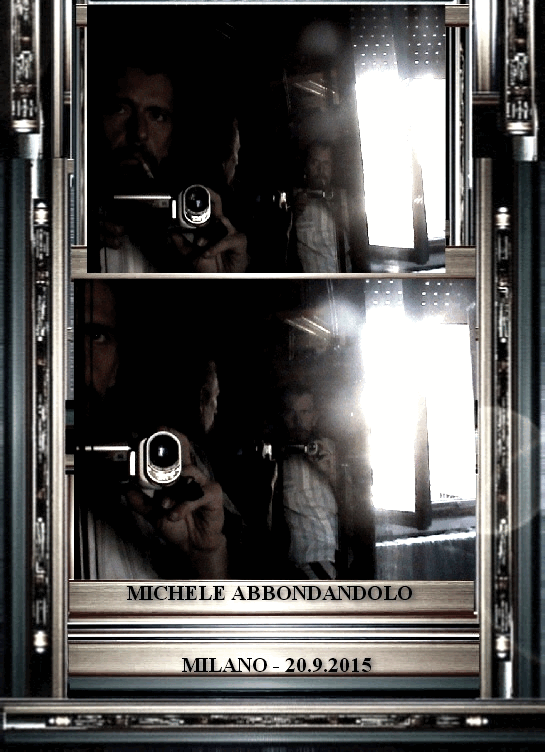


-

- ___Striker

-

